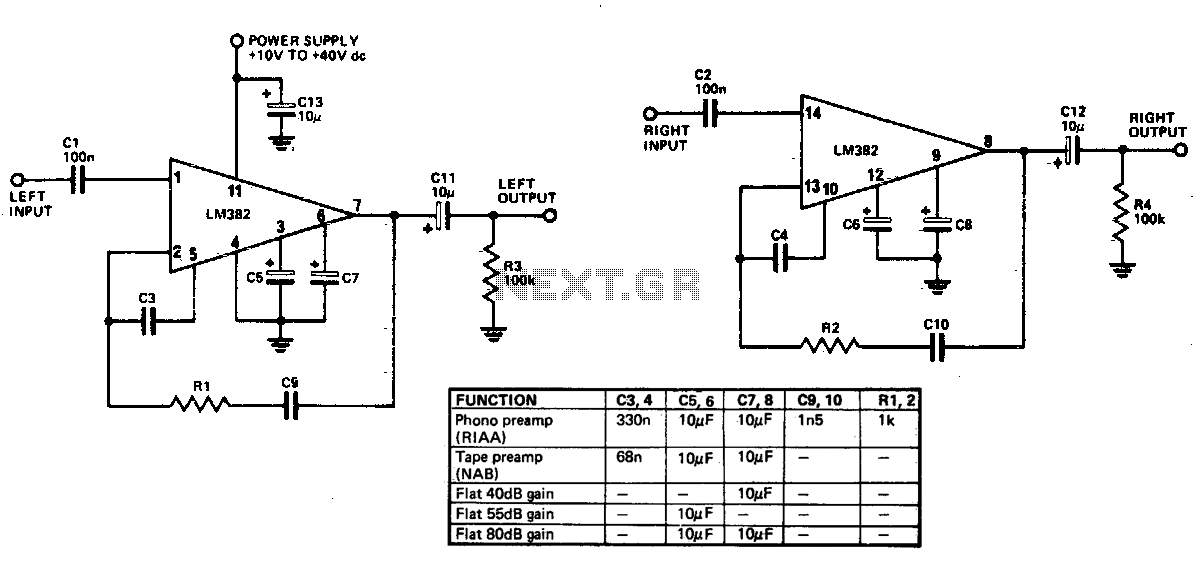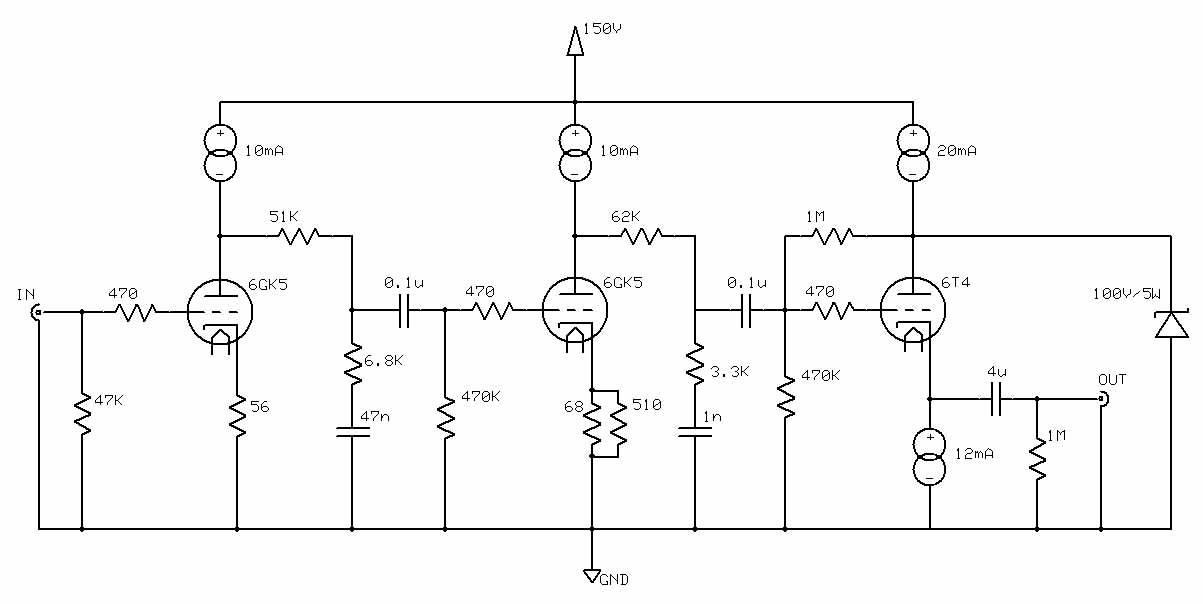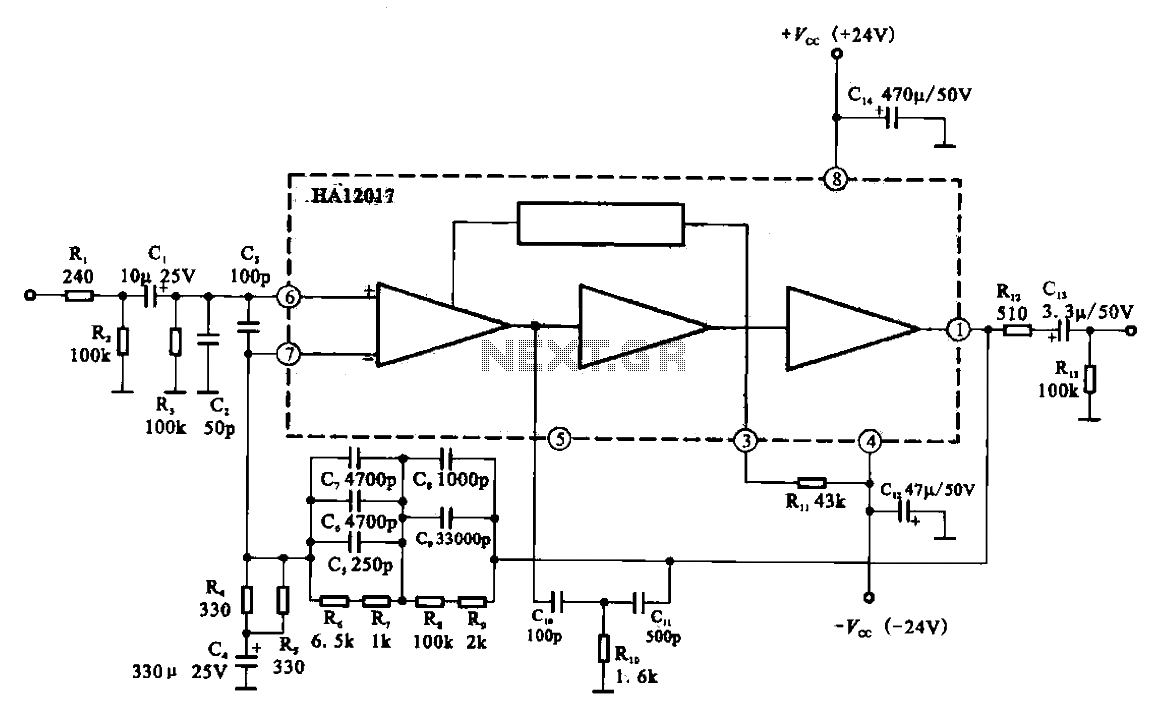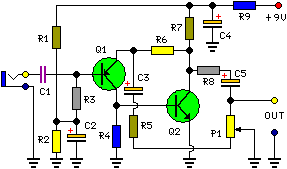
Phono RIAA Preamplifier
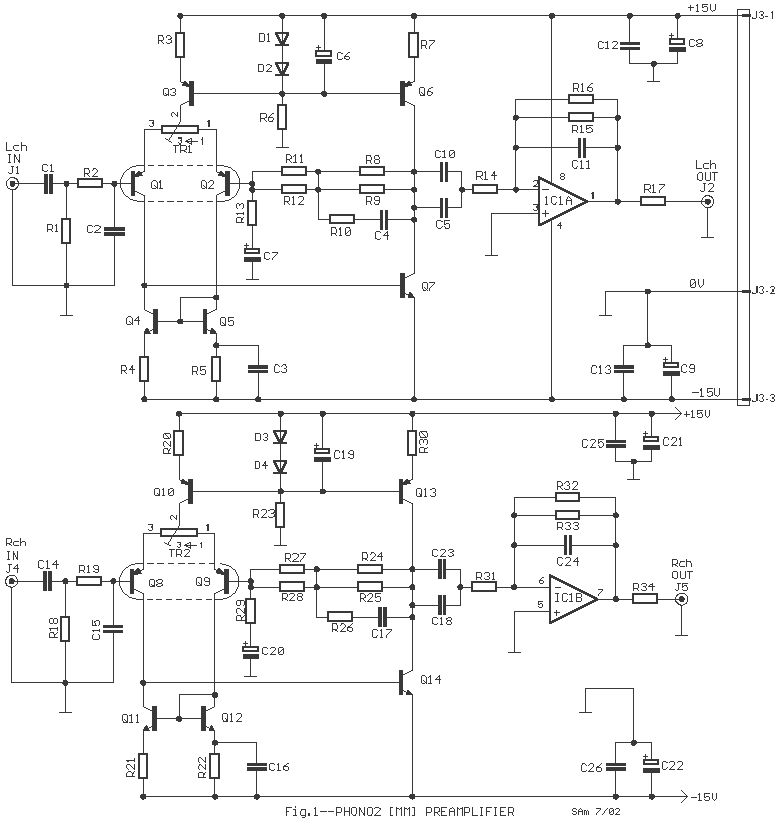
In this circuit exists a second designing proposal of preamplifier RIAA. The first stage uses discernible components and in second exist a opamp. [IC1]. In the negative feedback exist the correction RIAA filters. Certain points need certain discriminators: 1] capacitors C2 and C15, will be supposed to suit with the cartridge characteristics that you will use. 2] Transistors Q1-2 and Q8-9, good is they have matched in their characteristics and they are found very near so that they have the same thermic behavior. This can become with choice from a lot of transistors so that we find certain pairs with same characteristics, measuring with a hfe meter. 3] the trjmmer TR1-2 regulate the characteristics of differential amplifiers in the input, for null of DC voltage in the exit of stage. 4] the capacitors C4-17 and C11-24 should matched between them with capacitance meter, so that they have the same values, avoiding in this way the purchase of precise capacitors. 5] All the resistors should be metal film 1%. the circuit supply become from power supply, that exist already in amplifier or from external good stabilised supply ± 15V 100mA.
This circuit represents an advanced design proposal for a RIAA preamplifier, which is crucial for amplifying the low-level signals from a phono cartridge to line level. The design consists of two main stages: an initial discrete component stage followed by an operational amplifier stage, denoted as IC1. The operational amplifier is employed in the negative feedback loop, which is essential for implementing the RIAA equalization curve necessary for accurate audio playback.
Key components in the circuit include capacitors C2 and C15, which must be selected based on the specifications of the phono cartridge being used. These capacitors play a vital role in shaping the frequency response of the preamplifier and must be chosen to match the output impedance and characteristics of the cartridge.
Transistors Q1, Q2, Q8, and Q9 are critical in the design, and it is recommended that they are selected for their matched characteristics. This matching is important for maintaining thermal stability and ensuring that the transistors behave similarly under varying conditions. A hFE meter can be used to measure and select pairs of transistors with similar gain characteristics, which will enhance the performance of the differential amplifiers.
Trimmers TR1 and TR2 are incorporated to adjust the input differential amplifier characteristics, allowing for the nulling of any DC offset voltage at the output of this stage. This adjustment is crucial for maintaining signal integrity and preventing unwanted distortion in the audio signal.
Capacitors C4 through C17 and C11 through C24 should be matched in capacitance to minimize variations that could affect the performance of the circuit. Using a capacitance meter to ensure these components have identical values can eliminate the need for purchasing precision capacitors, thereby reducing costs while maintaining performance.
All resistors in the circuit should be metal film with a tolerance of 1%. This specification ensures low noise and high accuracy in the signal path, which is essential for high-fidelity audio applications.
The power supply for this preamplifier can be derived from an existing amplifier or an external stabilized supply, providing ±15V at 100mA. This voltage level is standard for operational amplifier circuits and ensures adequate headroom for the audio signals while maintaining low distortion levels.In this circuit exists a second designing proposal of preamplifier RIAA. The first stage uses discernible components and in second exist a opamp. [IC1]. In the negative feedback exist the correction RIAA filters. Certain points need certain discriminators: 1] capacitors C2 and C15, will be supposed to suit with the cartridge characteristics that you will use. 2] Transistors Q1-2 and Q8-9, good is they have matched in their characteristics and they are found very near so that they have the same thermic behavior.
This can become with choice from a lot of transistors so that we find certain pairs with same characteristics, measuring with a hfe meter. 3] the trjmmer TR1-2 regulate the characteristics of differential amplifiers in the input, for null of DC voltage in the exit of stage.
4] the capacitors C4-17 and C11-24 should matched between them with capacitance meter, so that they have the same values, avoiding in this way the purchase of precise capacitors. 5] All the resistors should be metal film 1%. the circuit supply become from power supply, that exist already in amplifier or from external good stabilised supply ± 15V 100mA.
🔗 External reference
This circuit represents an advanced design proposal for a RIAA preamplifier, which is crucial for amplifying the low-level signals from a phono cartridge to line level. The design consists of two main stages: an initial discrete component stage followed by an operational amplifier stage, denoted as IC1. The operational amplifier is employed in the negative feedback loop, which is essential for implementing the RIAA equalization curve necessary for accurate audio playback.
Key components in the circuit include capacitors C2 and C15, which must be selected based on the specifications of the phono cartridge being used. These capacitors play a vital role in shaping the frequency response of the preamplifier and must be chosen to match the output impedance and characteristics of the cartridge.
Transistors Q1, Q2, Q8, and Q9 are critical in the design, and it is recommended that they are selected for their matched characteristics. This matching is important for maintaining thermal stability and ensuring that the transistors behave similarly under varying conditions. A hFE meter can be used to measure and select pairs of transistors with similar gain characteristics, which will enhance the performance of the differential amplifiers.
Trimmers TR1 and TR2 are incorporated to adjust the input differential amplifier characteristics, allowing for the nulling of any DC offset voltage at the output of this stage. This adjustment is crucial for maintaining signal integrity and preventing unwanted distortion in the audio signal.
Capacitors C4 through C17 and C11 through C24 should be matched in capacitance to minimize variations that could affect the performance of the circuit. Using a capacitance meter to ensure these components have identical values can eliminate the need for purchasing precision capacitors, thereby reducing costs while maintaining performance.
All resistors in the circuit should be metal film with a tolerance of 1%. This specification ensures low noise and high accuracy in the signal path, which is essential for high-fidelity audio applications.
The power supply for this preamplifier can be derived from an existing amplifier or an external stabilized supply, providing ±15V at 100mA. This voltage level is standard for operational amplifier circuits and ensures adequate headroom for the audio signals while maintaining low distortion levels.In this circuit exists a second designing proposal of preamplifier RIAA. The first stage uses discernible components and in second exist a opamp. [IC1]. In the negative feedback exist the correction RIAA filters. Certain points need certain discriminators: 1] capacitors C2 and C15, will be supposed to suit with the cartridge characteristics that you will use. 2] Transistors Q1-2 and Q8-9, good is they have matched in their characteristics and they are found very near so that they have the same thermic behavior.
This can become with choice from a lot of transistors so that we find certain pairs with same characteristics, measuring with a hfe meter. 3] the trjmmer TR1-2 regulate the characteristics of differential amplifiers in the input, for null of DC voltage in the exit of stage.
4] the capacitors C4-17 and C11-24 should matched between them with capacitance meter, so that they have the same values, avoiding in this way the purchase of precise capacitors. 5] All the resistors should be metal film 1%. the circuit supply become from power supply, that exist already in amplifier or from external good stabilised supply ± 15V 100mA.
🔗 External reference
